 ‘Four things to see’ is sponsored by Bloomberg Connects, the free arts and culture app. Bloomberg Connects lets you access museums, galleries and cultural spaces around the world on demand. Download the app here to access digital guides and explore a variety of content.
‘Four things to see’ is sponsored by Bloomberg Connects, the free arts and culture app. Bloomberg Connects lets you access museums, galleries and cultural spaces around the world on demand. Download the app here to access digital guides and explore a variety of content.
Each week we bring you four of the most interesting objects from the world’s museums, galleries and art institutions, hand-picked to mark significant moments in the calendar.
On this day, 7 June, in 1816, New Englanders awoke to substantial snowfall instead of the expected warmth of early summer. Across the Atlantic, much of Europe was enduring unrelenting weeks of rain and cold gloom in what became known as ‘the year without a summer’. This anomaly, now understood to have been a ‘volcanic winter event’ – caused by a layer of sulphur dioxide that obscured the sun and reflected its rays back into space – was triggered by the eruption of Mount Tambora in Indonesia the previous April, and serves as a potent reminder of nature’s immense power and unpredictability.
Here we delve into the beautiful and chaotic realm of weather through the eyes of artists who have been moved and inspired by its grandeur and tumult. From snow storms and sea storms to tornadoes and floods, these artworks serve as reflections on the awe-inspiring and sometimes terrifying forces of nature, offering insights into human resilience and the enduring impact of climatic phenomena on our lives.
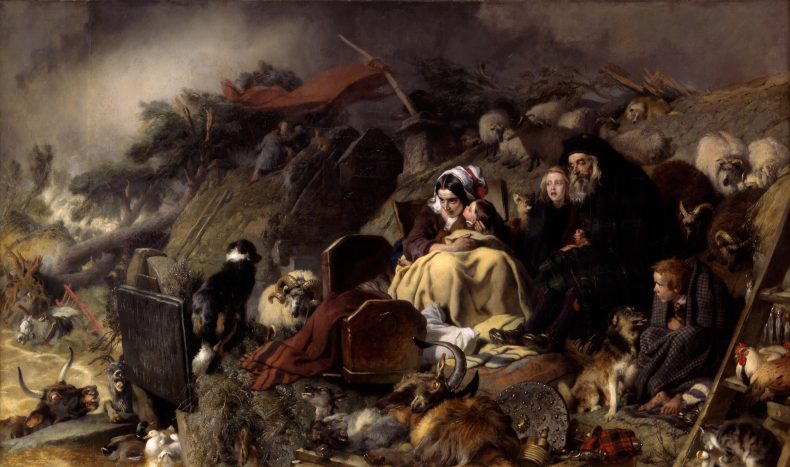
Flood in the Highlands (c. 1860), Edwin Landseer. Aberdeen Art Gallery, Aberdeen
Flood in the Highlands (c. 1860), Edwin Landseer
Aberdeen Art Gallery, Aberdeen
This painting by Edwin Landseer portrays the aftermath of a flash flood that ravaged the Scottish Highlands in 1829. The bleak scene captures the raw power of nature, with torrents of water cascading down the mountainsides. Landseer, best known for his romanticised depictions of animals, here presents a haunting vista of human and animal struggle amid the forces of the elements. Find out more on the Bloomberg Connects app by clicking here on your mobile device, or by scanning the QR code at the bottom of this page.
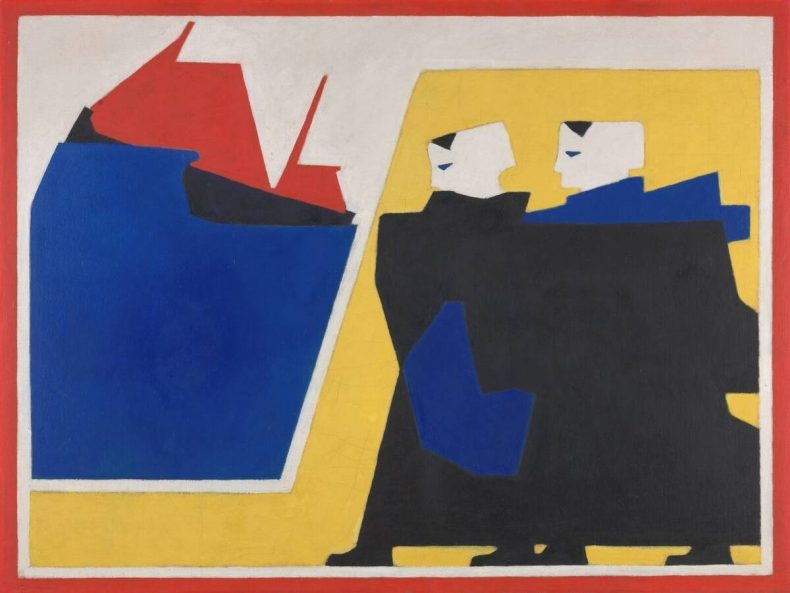
The Tempest (1916), Bart van der Leck. Kröller-Müller Museum, Otterlo
The Tempest (1916), Bart van der Leck
Kröller-Müller Museum, Otterlo
Bart van der Leck’s work offers an abstracted representation of a traditional Dutch scene: fisherwomen gazing out to sea, anxiously awaiting their husbands’ return. Simplified forms and bold primary colours evoke the storm’s intensity, while reflecting van der Leck’s departure from realism towards abstraction – he was a co-founder of De Stijl, together with Piet Mondrian and Theo van Doesburg. The painting captures the tension between tradition and innovation in modern art. Click here to read more.
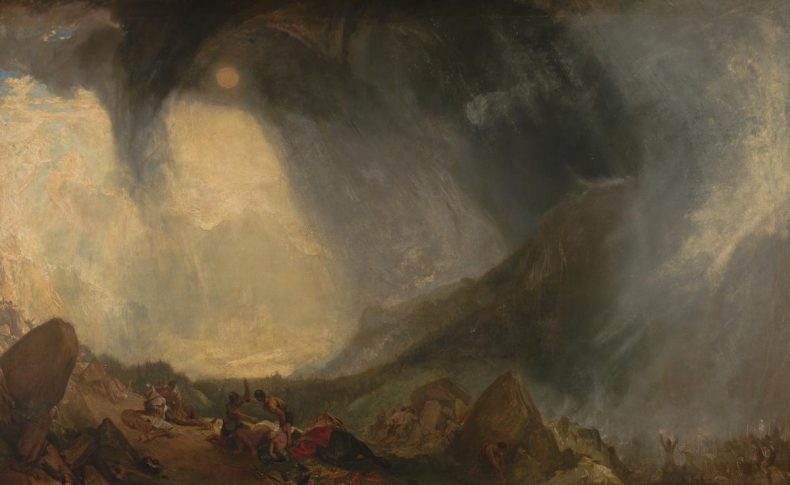
Snow Storm: Hannibal and his Army Crossing the Alps (c. 1812), J.M.W. Turner. Tate Britain, London
Snow Storm: Hannibal and his Army Crossing the Alps (c. 1812), J.M.W. Turner
Tate Britain, London
This masterpiece by Turner depicts Hannibal’s arduous journey through the Alps in the thick of a raging snowstorm. The swirling vortex of wind and snow symbolises the formidable challenges faced by the Carthaginian general and his army. Through dramatic contrasts of light and dark, Turner captures the epic struggle of man against the fury of nature. Click here to discover more.
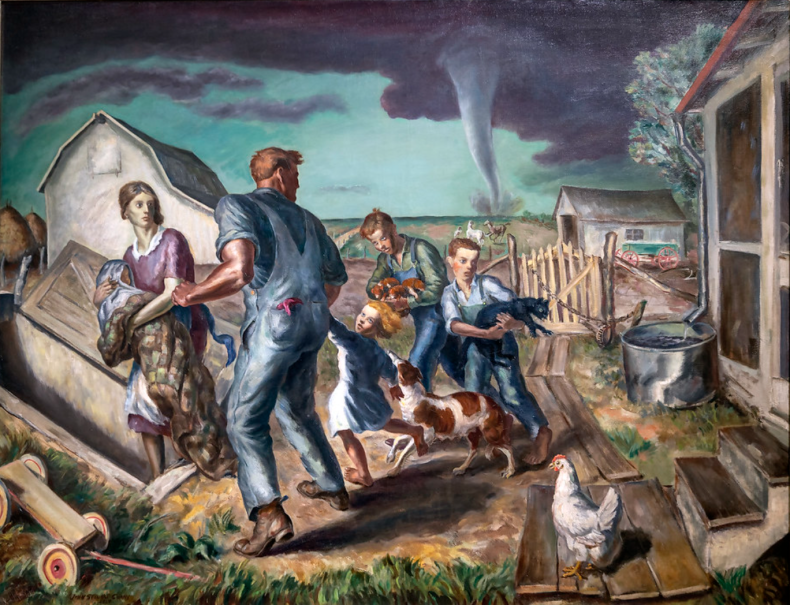
The Tornado (Tornado over Kansas) (1929), John Steuart Curry. Muskegon Museum of Art, Muskegon
The Tornado (Tornado over Kansas) (1929), John Steuart Curry
Muskegon Museum of Art, Muskegon
John Steuart Curry’s painting, one of his best-known, portrays the terror of a tornado bearing down on a Midwestern homestead. The house and barn bear a strong resemblance to those found on the Kansas farm where the artist grew up. Through his use of light and rendering of body positions and facial expressions, Curry conveys the drama and unpredictability of the weather event. The way he has arranged the figures emphasises the family’s unity in the face of impending disaster. Click here to find out more.
![]() ‘Four things to see’ is sponsored by Bloomberg Connects, the free arts and culture app. Bloomberg Connects lets you access museums, galleries and cultural spaces around the world on demand. Download the app here to access digital guides and explore a variety of content or scan the QR code.
‘Four things to see’ is sponsored by Bloomberg Connects, the free arts and culture app. Bloomberg Connects lets you access museums, galleries and cultural spaces around the world on demand. Download the app here to access digital guides and explore a variety of content or scan the QR code.
Unlimited access from just $16 every 3 months
Subscribe to get unlimited and exclusive access to the top art stories, interviews and exhibition reviews.


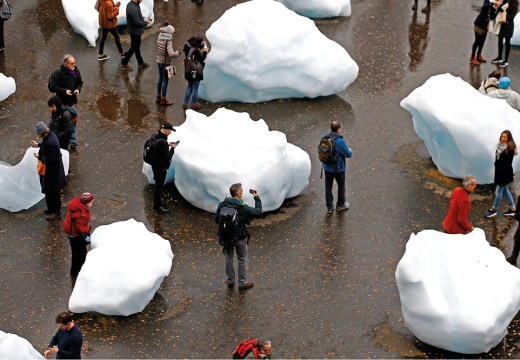
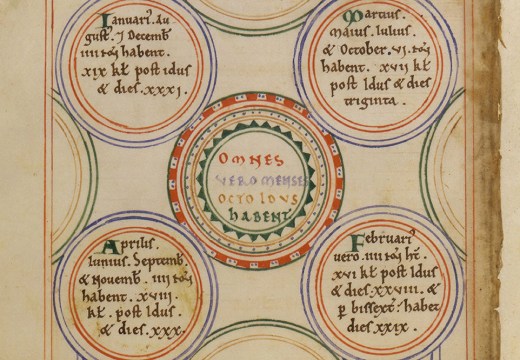
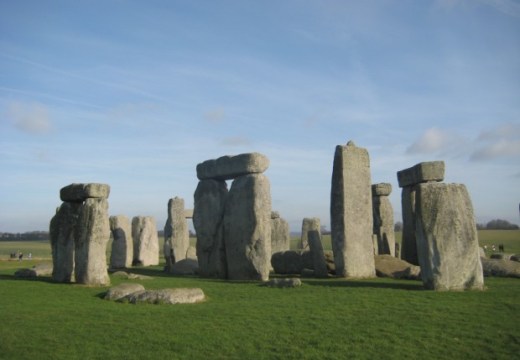









![Masterpiece [Re]discovery 2022. Photo: Ben Fisher Photography, courtesy of Masterpiece London](http://www.apollo-magazine.com/wp-content/uploads/2022/07/MPL2022_4263.jpg)
The threat to Sudan’s cultural heritage